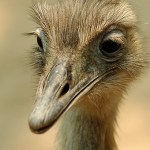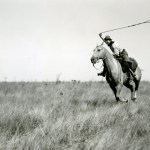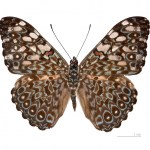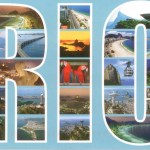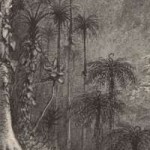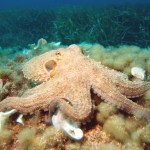Darwin and the Voyage
A podcast from earlier in the year, celebrating Darwin's birthday.
A few essays focusing on Darwin's Voyage on The Beagle
Bon Voyage HMS Beagle
The Voyage of the Beagle
Darwin Crossing The Atlantic
Charles Darwin and the Rain Forest
Darwin Gets his Wellies Wet
South America on Five Dollars a Day
Bugs (Darwin)
Darwin South of the Tropics
Darwin and The Gauchos
Fossil Quadrupeds
Rheas and the Birth of Evolutionary Theory
Elephants and Horses
In 1833, Darwin spent a fair amount of time on the East Coast of South America, including in the Pampas, where he had access to abundant fossil material. Here I'd like to examine his writings about some of the megafauna, including Toxodon, Mastodon, and horses, and his further considerations of biogeography and evolution.
In the vicinity of Rio Tercero...
Hearing ... of the remains of one of the old giants, which a man told me he had seen on the banks of the Parana, I procured a canoe, and proceeded to the place. Two groups of immense bones projected in bold relief from the perpendicular…
Everyone knows about Darwin's Finches, of the Galapagos Islands. But of course, Darwin made observations of birds throughout his travels on The Beagle. Here, I present a number of passages from The Voyage that include some of these observations.
Struthio Rhea
I will now give an account of ... the Struthio Rhea, or South American ostrich. This bird is well known to abound over the plains of Northern Patagonia, and the united provinces of La Plata. It has not crossed the Cordillera; but I have seen it within the first range of mountains on the Uspallata plain.... The ordinary habits of the…
Charles Darwin wrote a book called Geological Observations on South America. Since Fitzroy needed to carry out intensive and extensive coastal mapping in South America, and Darwin was, at heart, a geologist more than anything else (at least during the Beagle's voyage), this meant that Darwin would become the world's expert on South American geology. Much of The Voyage is about his expeditions and observations. Part of this, of course, was figuring out the paleontology of the region.
Bahia Blanca is a port at the northern end of Patagonia. Chapter V of The Voyage begins:
THE Beagle…
We are only a tiny ways through the voyage. Need to hurry up! So, let's skip ahead a bit and hit the Gauchos.
Well, you don't really want to hit at Gaucho ... they hit back rather hard....
The Gauchos are the cowboys of the so-called Southern Cone and Pampas. The Gauchos are a Latin American version the horse mounted pastoralists that emerge wherever four things are found together: Grasslands, horses, people and cattle. Like all horse-mounted pastoralists, they have been known to have certain cultural tendencies or traits. These include being incredibly good horse riders. It includes…
Eventually, the Beagle headed south to the area of Uruguay and Argentina, still on the Atlantic Coast, where extensive mapping of the coastal waters was required.
The Parana and Uruguay Rivers meet in the Atlantic estuary known as Rio de la Plata. On the north side of this huge body of water is Montevideo, Uruguay, and on the south side, the northern coast of Argentina. There is an interesting story linked with early European exploration of this area. A Spanish ship is the first known European craft to explore La Plata. The ship's captain and a small crew went inland, and never came…
When reading The Voyage it is impossible to miss the observation that much of the time Darwin was engaged in adolescent boy behavior: Pulling the heads off insects, noting how long they would wiggle after cut in half, closely examining the ooze and guts, occupied much of his time. Obviously, careful observation and a strong stomach were not all that was required to think up Natural Selection and his other theories, or the Origin of Species would have been written dozens of times by dozens of grown up kids.
In the following passages, Darwin is still along the Atlantic Coast, in "The…
What do you eat when you are traveling the world in search of truth about the natural world? Most of the time Darwin ate pretty well...
While traveling through the interior near Rio, Darwin makes note of some of the agricultural practices of the region. He is visiting farms ... plantations .. carved out of the forest.
The chief produce of this part of the country is coffee. Each tree is supposed to yield annually, on an average, two pounds; but some give as much as eight. Mandioca or cassada is likewise cultivated in great quantity.
... that would be Manihot, or cassava, also known as…
I became acquainted with an Englishman who was going to visit his estate ... more than a hundred miles [north] of Cape Frio. As I was quite unused to travelling, I gladly accepted his kind offer of allowing me to accompany him.
And so was the case with a number of Darwin's excursions into the bush.
Although he organized expeditions to the interior, he also took advantage of individuals or groups traveling one place or another, such as this Englishman, in order to carry out random acts of geologizing and opportunistic biologizing.
And thus seven men, including Darwin and his Englishman,…
The first time I read the following passage from The Voyage, I was reminded of my own first experience in a rain forest (in Zaire). Evident in this passage is at least a glimmering of Darwin's appreciation for the complexity of ecosystems. Darwin could be considered the first scientific ecologist. Enough of my commentary ... this passage very much stands on it's own ...
BAHIA, OR SAN SALVADOR. BRAZIL, FEB. 29TH.--The day has past delightfully. Delight itself, however, is a weak term to express the feelings of a naturalist who, for the first time, has been wandering by himself in a…
Behold this humble passage by Darwin, which is what immediately follows his discussion of the octopus. This passage is a touchstone to several important aspects of what Darwin was doing and thinking, and is a poignant link to what Darwin did not know:
ST. PAUL'S ROCKS.--In crossing the Atlantic we hove to, during the morning of February 16th, close to the island of St. Paul.
Ah, sorry to interrupt. Saint Paul's Rocks are in the Atlantic roughly half way between South America and Africa. That geographical information should give you a hint of why these rocks are important!
"Hove to"…
Of his time on the Beagle (1832 - 1836), Darwin wrote, "The voyage of the Beagle has been by far the most important event in my life and has determined my whole career." Of the manuscript describing that voyage, he wrote, "The success of this my first literary child always tickles my vanity more than that of any of my other books."
An early version of "The Voyage."Taking a cue from these reflections, I'd like to spend some time with this book. To begin with, it is appropriate to clear up some potential confusion. Or if not clearing it up, perhaps creating it because you may not be aware of…

